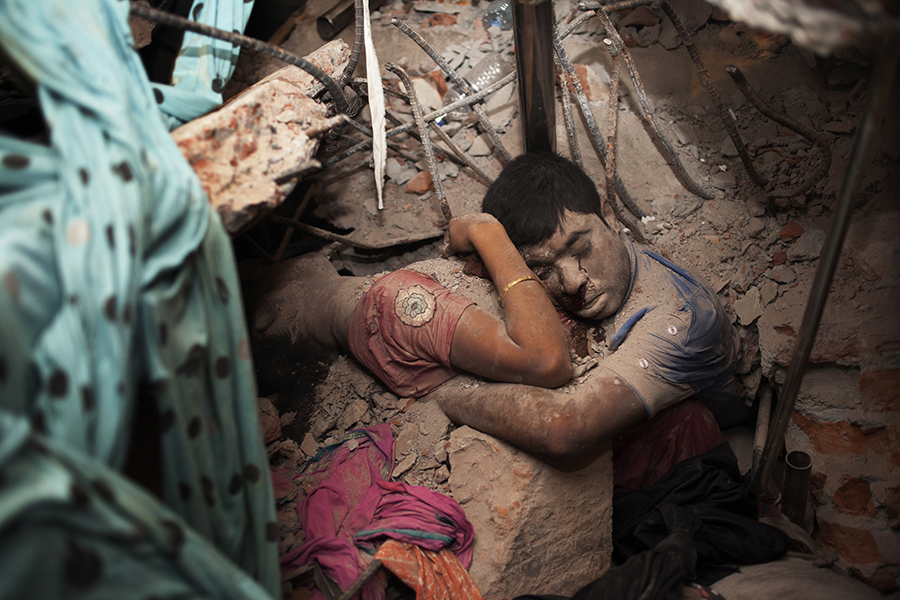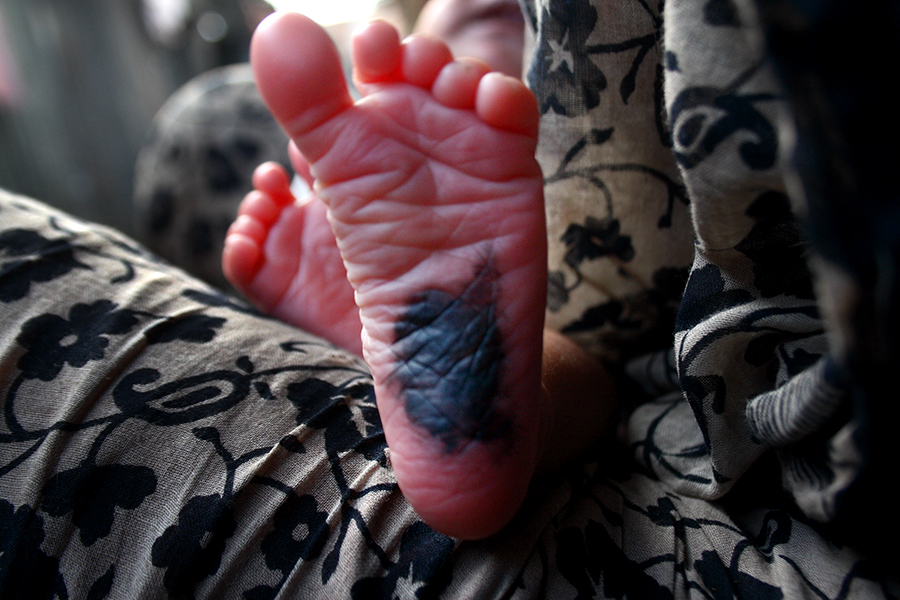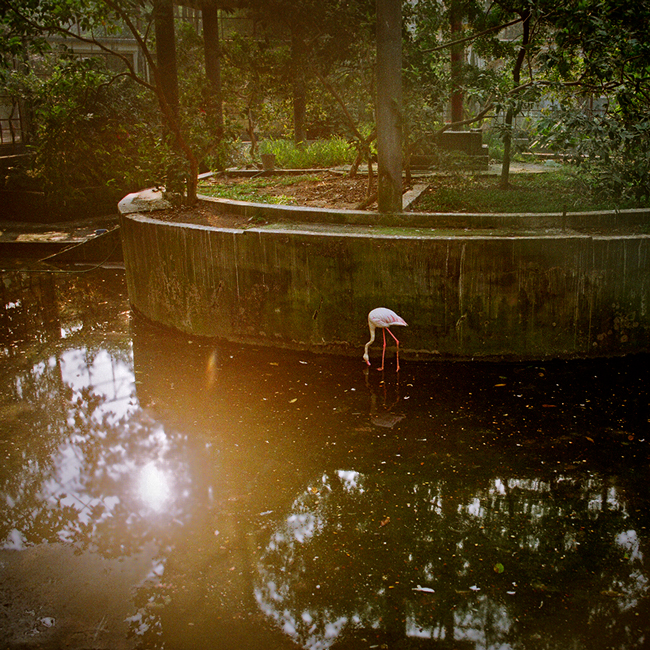Shows
Transitions: New Photography from Bangladesh


Modest in tone and scale, “Transitions” is an exhibition that has constructed deliberate breaks between the collected photographs on display, offering a series of keyhole views on Bangladesh that circumvents the creation of a fixed or specific image of the country. Organized by the Bangladeshi American Creative Collective at New York's Bronx Museum of the Arts, with a Bangladeshi-American audience in mind, “Transitions” avoids any nostalgic reconstruction of Bangladesh as “home.” Just as the exhibition’s title suggests states of in-between, interim and flux, the concept of “home” could be seen as a multiple and a mutable space. Thus, any attempt to construct a sense of “home” for a Bangladeshi-American audience would be insufficient, uncomfortable, and perhaps even alienating; an attempt that this exhibition deftly avoids. Likewise, for a non-Bangladeshi audience the exhibition offers a glimpse of Bangladesh without forming a constructed or didactic image of the country.
That being said, a point of continuity that runs through “Transitions” is the prevalence of female subjects in its exhibited photographs. While this could be an unstated corrective toward the notion that women in Bangladeshi society are invisible and entirely disempowered subjects, the photographs on display present intricate means of expressing such a view. Arfun Ahmed’s photographic reconstruction of Manet’s Olympia (1863), for example, shows the racial roles of the original painting swapped, with a Bangladeshi woman in the place of Olympia, and a white figure as her bouquet-holding servant. While this exchange performs an interesting take on a high moment of European art-historical canon, it is not entirely positive. Manet’s original Olympia, despite her assertive gaze and posture, is an ambivalent figure, subjugated by the viewers who return her gaze and— by implication—their capacity to derive venal and even violent pleasure from the body that she so adamantly puts on display. Ahmed’s photographed figure asserts her own particular physical and social identity; though she also seems to recognize that such an assertion is neither neutral nor safe from the possibility of reprisal in some form or another.



Similarly, Jannatul Mawa’s images of middle-class women and their household maids, photographed in a rare moment in which the two sit side by side, make for intimate yet highly weighted portraits. Mawa’s photographs acknowledge the likelihood of exploitation, but also establish a powerful sense of complex mutual attention and care between the female maids and their employers. Saikat Mojumder and Taslima Akhter represent female labor most bleakly in two photo series. In 2013 Akhtar captured a now-iconic image of a man and a woman trapped in an embrace under the rubble of the collapsed Rana Plaza factory. It is a wretched yet profoundly moving image that, within the exhibition, finds companionship within a larger series by Akhtar featuring the aftermath of the factory’s collapse, along with Saikat Mojumder’s “Life: Born in a Slum.” In this curatorial pairing, Mojumder’s photographic record of a newborn child in a slum become equally as harrowing as Akhtar’s images of death.

However, despite the inclusion of such photographs in “Transitions,” the exhibition is not limited to a straightforwardly dark vision. Indeed, while both Mawa, Mojumder and Akhtar’s photographs see women as being vulnerable to tragedies wrought by men and larger forces beyond their control, the works also highlight women’s prominent place in Bangladesh, as providers of income and as mothers, lovers, wives, sisters and friends. The exhibition also presents brighter, and in many ways “simpler,” counterparts to such artworks. Tapash Paul’s pragmatic and muted photographs of a zoo in Dhaka, for example, combine an acknowledgement of the zoo’s dilapidated state with its role as a space of leisure and escapism. Also on view, Samsul Alam Helal captures figures performing exaggerated, but also profoundly joyful roles against a photography studio backdrop, and Debashish Chakrabarty’s vibrant photo-abstractions offer the viewers pleasureful shape, line and color.
Displayed in a light-filled atrium, which looks out over a main highway through the Bronx and toward Yankee Stadium, the home of “Transitions” could not seem further from that of its content. With the museum firmly rooted in New York, viewers to this exhibition cannot “find” Bangladesh within the array of photographs—nor should any visitor attempt to. “Transitions” poignantly demonstrates a series of views on contemporary Bangladesh, which are peacefully without hubris or a stifling sense of completion.
“Transitions: New Photography from Bangladesh” is on view at the Bronx Museum of the Arts, New York, until February 14, 2016.







